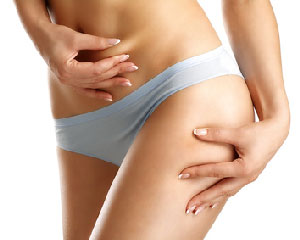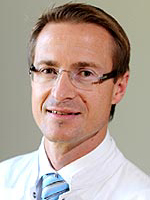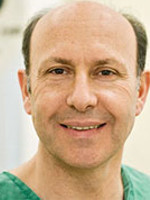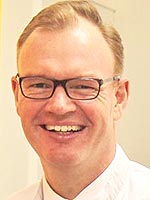A flat abdomen and a slim, tight waist seem to be an unattainable dream for many women. Especially when the skin in the abdominal wall has been heavily stressed by pregnancy or radical emaciation treatments, it can often no longer recede because it has lost elasticity. Sports, massages and diets are not enough in such cases. The excess tissue must be surgically removed to bring back the earlier shapes and a feminine silhouette.
Increasing cellulite, sagging cheeks and a sagging belly: the firmness of the female connective tissue decreases steadily with advancing age. The abdomen and waist in particular are often exposed to special stresses from dieting and pregnancy. The so-called stretch marks are only a relatively mild, undesirable legacy of heavy weight increases and decreases. Lax skin areas on the abdomen and waist weigh heavier for most women, which are popularly known as the "fat apron".
The older the affected women, the greater the risk that excess skin structures will remain on the abdomen as a result of weight loss or pregnancy. The main reasons for this are the falling collagen content and the loss of elasticity of the skin and connective tissue. In this way, the sagging, "hanging" tissue cannot regress, a circumstance from which many women - but also some men - suffer greatly and which can lead to extensive impairments in everyday life. The only option that is available to many of those suffering from a sagging abdominal wall is ultimately a tummy tuck, which is also known as abdominoplasty or lipoabdominoplasty.
Indicators of a Tummy Tuck
A tummy tuck is indicated if there is an extreme excess of skin in the abdominal area. This can be the case after heavy weight loss or after pregnancy. The friction of the skin flap often leads to skin irritation and infection or ulcers.
The tummy tuck is not used to reduce fat. With general obesity, dietary measures are required first. An optimal result can only be achieved when tightening the abdominal wall if the weight has been reduced to a reasonable level.
In conventional abdominal wall surgery, the surgeon removes a transverse, spindle-shaped skin area. The abdominal skin is loosened from the hip bones above the muscles, possibly up to the costal arch. This allows the abdominal wall to be pulled down and tightened by about ten centimeters. The surgeon removes the excess skin; if the abdominal wall is weak, the muscle layer is also sutured.
With endoscopic abdominoplasty, weaknesses in the abdominal straight muscles are eliminated without removing significant skin excess. The surgeon sutures the abdominal muscles with an endoscope via a small access. The surgeon sutures the abdominal muscles with an endoscope via a small access.
Fill abdominal lifting (abdominoplasty) is one of the most complicated surgeries. It's aimed at restoral of proportions of belly and low-lateral sections of the thorax. Basic signs of a “correct” belly are an elastic abdominal wall with smooth contours a bit protruding below the navel and slightly concaved above the navel. There's a small furrow between the edges of the rectus abdominis muscle, rigid muscles near the area of the pelvis, and lateral abdominal surfaces that form a smooth line of waist.
Abdominoplasty is indicated in the following cases:
- Aponeuroses stretching and separation of rectus abdominis muscle with ski stretching. Sometimes, they are also accompanied by hernia of the umbilical ring and so-called dominant line.
- Excess of subcutaneous tissue that cannot be eliminated with physical exercise, healthy eating, liposuction and other combined methods.
- Serious post-surgical scars on the abdomen, hernias in the pelvis after surgery.
- Weak elasticity and lack of collagen that makes liposuction pointless.
- Skin excess (flabbiness) and ptosis of the soft tissues on the front abdominal wall that forms a fold in the lower abdomen, or an 'apron' of skin and fat, scar atrophy (multiple white stretches - striate atrophy of skin).
Pretty often, such operations are made in patients with tissue ptosis that can be defined when a patient is in a vertical position. According to the level of ptosis, four types of it are classified:
- Minor skin stretching (without folds) in the lower abdomen; in such case, multiple striate is the indication for a surgery;
- Flabbiness of tissues above the navel combines with a minor skin-fat fold in the lower abdomen;
- An "apron" up to 10 cm thick that's located on the edge between the front abdominal wall and the lateral sections;
- Fat-skin apron exceeds the thickness of 10 cm, goes to lateral abdomen sides and hangs down.
The volume of abdominoplasty and choice of the surgery depends on the level of ptosis and separation (diastasis) of the rectus abdominis muscle, as well as the presence of hernias.
General principles and preparation for a surgery
The main point of surgery in both men and women is a correction of tissues to restore aesthetics of the navel, waist, and abdomen, and make it flatter. For this purpose, a surgeon cuts out navel, pelvic or epigastric hernias, eliminates the separation of the rectus abdominis muscle, removed excessive skin with subcutaneous tissues, forms the correct navel form, and restores a natural abdomen position.
Preparation for the surgery includes:
- a surgeon defines the level of tissue ptosis, finds hernias and asks about concomitant diseases;
- laboratory tests (blood and urine tests, definition of blood coagulation, electrolytes tests, blood group and Rhesus factor, RW, hepatitis antibodies, HIV), fluorography and ECG;
- consultation with therapist and anesthesiologist;
- 2 weeks prior to the surgery, patients should cease smoking and take hormonal medications, non-steroid anti-inflammatory drugs and the products lowering blood coagulation level;
- the night and morning before the operation, a patient shouldn't eat and drink.
Surgical access for abdominalplasty is made along bikini like: incision starts from pubis and goes to hip bone in the zone of inguinal fold. After that, the skin is separated from muscles and is moved to the chest. Weakened muscles and fascia are stitched to reach the desired effects of abdominal plastic surgery.
When muscles are strengthened, excessive skin of anterior abdominal wall is fixed when it's returned to the optimal position. This is how the main effect of abdominal plastic is reached. An incision is made on belly-button projection, then it's stitches in the area of primary cut.
Contraindications and limitations
Abdominoplasty is contraindicated when a patient has:
- Acute or chronic diseases.
- Diabetes, diseases of the thyroid body (thyrotoxicosis or hypothyroidism).
- Heart diseases (abnormal rhythm, cardiac defects with stenosis, atherosclerotic cardiovascular disease).
- Systematic diseases of connective tissue.
- Poor blood coagulation.
- Pulmonary diseases, lung or heart failure.
- Unstable psychological state.
Even if there are no contraindications, abdominoplasty isn't appropriate when a patient plans a pregnancy or weight loss with intense diets, because, in the long run, it can lead to secondary stretching of tissues, low elasticity, and tissue tension.
The operation isn't appropriate when a patient has a lot of adipose tissue – there can be post-surgery complications, such as purulence and formation of seroma (collection of intertissue liquid in the surgery area). In this case, liposuction should be performed, after which abdominoplasty can be made within 6 months.
Methods of Abdominal Lifting
Together with classic abdominalplasty, German reconstructive surgery clinics use advanced methods of abdomen lifting.
- Classis abdominoplasty
- Vertical and lateral abdominoplasty
- Mini abdominalplasty
- Endoscopic abdominalplasty
- Backward abdominalplasty
- Dual-track abdominalplasty
- Transumbilical abdominalplasty
Classis abdominoplasty
This approach is more traumatic than the previous ones, such surgery lasts longer (up to 4-5 hours), requires a longer recovery period, and the chance of complications is higher. Classic abdominoplasty is indicated only for patients with ptosis of III and IV degree combines with separation of the rectus abdominis muscle and hernias.
This operation is made under combines endotracheal anesthesia and/or regional anesthesia (or analgesia) taking several steps:
- Cut on the lower abdomen and mobilization (separation) of skin graft with adipose tissues to rib arches, xyphoid process, and lateral abdominal sections.
- Cut around the navel and separation of it.
- Elimination of a hernia and separation of muscles on the area of the white line.
- Cutting of excessive skin and adipose tissue.Иссечение избыточной кожи и жировой клетчатки.
- The lifting of tissues of the upper abdominal zone in the direction of the pubic, movement of the navel and fixation in a new place.
- Sealing.
Vertical and lateral abdominoplasty
In the first case, a surgeon makes a complementary vertical cut. This variant is indicated in case of the vertical scar left after the previous operations for surgical diseases, in case of serious obesity, thinning and striate in the central area, serious separation of the rectus abdominis muscle, or if there's a need to cut a larger area of tissues.
In the second case – skin grafts are cut and lifted in the lateral sections mostly, which allows diminishing the area of separation and forming the waistline. When the lateral approach is applied, the risk of complications is lower (in comparison with the classic approach) due to a lower volume of tissue separation, the speed and quality of scarring are higher due to lowered tension.
Recovery after the classic abdominoplasty and its kinds implies 2-week examination by the surgeon, care of the post-surgical stitches, wearing compression garments during 2, 3, 4 and more months. Minor physical activity and a hot bath are allowed within 1-1.5 months, and usual physical activities are allowed in 3-4 months.
Mini abdominalplasty
Mini abdominalplasty is recommended for patients with minor amount of excessive skin tissue. During operation, excessive skin is removed. Since cut soft tissues are located in the lower part of abdomen, belly button is not moved, and the procedure is made with a smaller cut. Besides, mini abdominalplasty causes less stress for patient's body due to minor surgical invasion: abdominal skin layer separation is not required in this case.
The main advantage of mini abdominalplasty is lower injury rate. It means that patient will recover quicker, and post-surgery period will be easier for a person.
Endoscopic abdominalplasty
Endoscopic abdominalplasty means that only weakened muscles of anterior abdominal wall will be lifted: it is usually performed in patients with pretty firm skin. Endoscopic abdominalplasty is performed via small incisions with endoscopic instruments which poses lower stress for patient's body, makes up for faster recovery and great cosmetic effect. After endoscopic abdominalplasty in Germany, scars become unnoticeable within a few months. Besides, they're located in bikini zone. Together with liposuction, this type of surgery renders better aesthetic result and corrects patient's body considerably.
Backward abdominalplasty
In German plastic surgery clinics, backward abdominalplasty is performed to lift several groups of muscles and remove excessive subcutaneous fat. A surgeon accesses the area in the underbust fold which makes scars invisible for the others.
Dual-track abdominalplasty
Dual-track abdominalplasty combines mini abdominalplasty and backward abdominalplasty. During such operation, muscles of anterior abdominal walls are strengthened via incisions in bikini zone, and abdomen skin is lifted with access via the underbust fold to reach the best results.
Transumbilical abdominalplasty
Transumbilical abdominalplasty is performed to strengthen abdomen muscles, and is recommended for patients with firm skin. This operation is performed with endoscopic instruments via belly button. The basic stage of incision presupposed stitching of straight abdominal muscles above and below belly button. Transumbilical abdominalplasty allows reaching stunning results: you get firm abdomen without scars.
Preparation to Abdominal Lifting
Prior to any surgery, it's important to consult with the doctor and perform preliminary analyses and examinations. If you have any diseases, possible allergic reactions or individual intolerance of drugs, inform your doctor about it to avoid possible negative reaction. Since nicotine slows down wound healing, you need to stop smoking 2 weeks prior to abdominal lifting surgery.
Before the operation, a doctor measures excessive skin and adipose zones and marks them on patient's body. As a rule, photographs of operated body parts are made to evaluate the results of operation when it's finished. Besides, a special foundation garment is made beforehand to be worn after the procedure.
In general, if a patient has good overall physical state before abdominal lifting, it can minimize all possible surgical risks. It's not recommended to lose weight 3-4 weeks before the operation, because it can affect metabolism and weaken the immune system. Besides, poorly balanced diet can provoke the symptoms of deficiency, and it slows down wound healing.
Procedure
Depending on the extent of skin sagging, the method of surgery can vary widely. The ideal technique essentially depends on your physical requirements and individual ideas. Basically, with each tummy tuck above the pubic area, a long horizontal or differently curved, possibly also an anchor-shaped cut is made. The belly button is separated from the skin tissue with a round cut. In order to tighten the abdominal skin, the skin tissue between the abdominal incision and the ribs is detached from the abdominal wall. Depending on your needs, the plastic surgeon tightens the straight abdominal muscles by putting them back together and fixing them. This should make the abdominal wall firmer and the waist narrower.
The plastic surgeon now pulls the detached skin tissue down. Excess skin is removed and the skin flap is sewn on. To reposition the navel, a new access is cut into the skin and the navel is sewn in again.
If only the skin between the navel and the abdominal incision is loosened and tightened, one speaks of a "partial abdominoplasty". The necessary cut is usually smaller, and the operative relocation of the navel is often not necessary. By tightening the skin downwards, however, it also changes its position.
At the end of the procedure, drains are usually placed to facilitate the drainage of wound secretions and blood. Depending on the extent, the operation takes between 1.5 and 3 hours.
Post-surgery Treatment
To endure normal blood flow to the skin, abdominal area is braced with a light compression pad or a simple elastic bandage. In a few days, a patient can wear a special foundation garment created specifically for the procedure. Depending on the complexity of abdominal lifting, it should be worn day and night from 3 to 6 weeks.
In 2-4 days, drainage tubes are removed, and in 2-3 weeks, stitches are removed, as well. Depending on the complexity of operation and doctor's recommendations, it's not allowed to perform physical exercise and practice heavy sports for at least 6 weeks after the procedure. However, it's recommended to restore minimal physical activity as soon as possible to avoid development of thrombosis.
First results will be visible as soon as swelling reduces. However, scars will become flat and light in a few months only.
Possible Risks
After abdominoplasty, complications are possible. They can be local or general.
First, there may be complications connected with anesthesia. During the first post-surgical period there can be pneumonia and breathlessness, especially when a lot of tissues have been cut to reduce abdomen size, thromboembolism of pulmonary artery, especially in case of varicose veins in the lower limbs. These complications are rare, but possible even when a person works with professional surgeons and anesthesiologists.
Local complications of abdominoplasty:
- Blood tumor in a bleeding vessel, formation of seroma and purulence – that requires cutting stitches and removing the mass inside.
- 2.Purulence and necrosis of the wound edges. It can happen due to the abnormal blood supply of tissues; in such case, necrotized tissues are cut out, and new stitches are made.
It's also hard to eliminate the probability of absence of positive results.
There are alternatives to abdominoplasty – diets, physical exercises, electric muscle stimulation, vacuum-rolling massage combined with injection lipolysis, and different kinds of thermal lifting. However, these methods can be used when ptosis, hernias, and separation of muscles are absent.
Possible Complications After Abdominal Lifting
Abdominal lifting is an extensive aesthetic and surgical procedure that requires considerable invasion in patient's body. As any other operation, it can cause different complications that can be controlled though.
In some cases, a small amount of wound secretion is emitted during or after operation. However, timely installation of drainage construction in abdomen helps to detect and eliminate these problems.
Besides, abdominal lifting can cause such complications as problems with blood flow and wound curing, and in rare cases, especially big scars form. However, these risks can be minimized with the help of a special compression pad. Loss of sensitivity during the first months after the operation is normal, and permanent sensitivity loss occurs rarely.
From aesthetic standpoint, abdominal lifting can be connected with such risks as mark development, asymmetry of contours, and ugly scars. However, these problems can be simply fixed with a secondary operation. Following doctor's recommendations strictly before and after the surgery, a patient can avoid complications in the future.
Tummy Tuck Guidelines
Despite the increasing liposuction in the abdominal wall, abdominoplasty is still important. The aim of the measure is to tighten the abdominal skin if there is a real overlap and apron formation of the skin and subcutaneous fat in the lower abdomen. This is often associated with a divergence of the two straight abdominal muscles, which are united again in this surgical measure. The sole excess of fat with at the same time tight elastic skin should be treated today by liposuction.
A further indication for abdominoplasty is available if e.g. in the course of a previous pregnancy, a so-called striae formation - a scarred healing tear of the actual skin layer in the lower abdomen - has occurred. This can also occur in the context of a pronounced obesity and is particularly noticeable after weight loss.
When tightening the abdominal skin, the skin and subcutaneous fatty tissue are transversely cut from the iliac crest to the iliac crest. The portion of the abdominal skin lying upside down is detached from the actual abdominal wall and pulled towards the foot. The excess portion of the skin and subcutaneous fat is removed. This is associated with a new implantation of the navel.
A prerequisite for a corresponding operation can be carried out, however, is an adequate excess of skin fat tissue in the upper abdomen. As part of the operation, it is necessary that the navel be reinserted into the skin fat tissue above the navel. For the operation, there must be enough skin and subcutaneous fat in the upper abdomen, which can be pulled down to the level of the pelvic crests.
With such an intervention, the patient must be aware that after healing, a scar runs from the iliac crest to the iliac crest that remains clearly visible. A subtle scar formation can also be seen in the navel area. If the abdominoplasty is performed solely for aesthetic reasons, a relative fitness must be present, since the procedure places a considerable strain on the entire organism. Abdominoplasty is often associated with blood loss, which can, however, be compensated for by a healthy organism.
In the case of pathological obesity, there are other requirements that cannot be discussed here in the context of the presentation of measures. As already mentioned at the beginning, an abdominoplasty is not necessary if the excess fat is localized and the skin is still relatively tight and elastic.
Cardiovascular diseases, which can become important with regard to reduced resilience, particularly in the context of the surgical trauma, must be treated beforehand. In the presence of diabetes (diabetes), such an intervention should be discouraged, since the operation creates very large wound areas that require an intact defense system. Very often, however, the general immune system is weakened in sugar disease. If there is generalized obesity, the health risks of such an intervention must be carefully weighed against one another preoperatively. As part of such an intervention, only a circumscribed reduction in adipose tissue can be carried out.
In general, it should be noted that abdominoplasty is a major surgical procedure with clearly visible scars. Since the abdominal cavity shrinks as part of the operation, patients with impaired lung function are not recommended, as are patients with bowel movements.
If there is real fat apron formation, a significant improvement in the silhouette can be achieved both in supervision and in particular in profile. However, the clearly visible scar formation must be accepted. At the same time, this intervention involves moderate weight loss.
The tummy tuck, which is done for aesthetic reasons, should also leave an aesthetic scar if possible. For this purpose, the future course of the scar must be discussed with the patient preoperatively. A clue for later scar guidance is, for example, the shape of swimsuits or bodies that are worn. If possible, the cut is chosen so that a large part of the scar can later be hidden under these items of clothing. Depending on the shape of the cut, a flat scar course from the iliac crest to the iliac crest or a somewhat steeper scar course can be selected. A steeper scar should be preferred if high leg openings are often worn with appropriate clothing.
In the middle part, the skin incision is immediately above the pubic hair line. The upper limit of the incision is usually the upper navel edge, with the navel being cut sparingly in a circle. In the further surgical procedure, the entire skin fat coat is now replaced by the so-called abdominal wall fascia. This fascia represents the actually tight structures of the abdominal wall. The abdominal muscles run under these fasciae. The skin and subcutaneous fatty tissue must be detached from the bottom up to the level of the costal arches. This step must be carried out very carefully in order to achieve complete mobility of the entire abdominal skin. When preparing the abdominal skin, hemostasis must be carried out carefully, since many vessels run between the actual abdominal wall and the skin as well as the subcutaneous fatty tissue. After the skin and subcutaneous fatty tissue have been detached, the actual abdominal wall is inspected.
If there is then a divergence of the two abdominal muscles that are going straight from head to foot, a special surgical technique can bring these two muscles closer together. If this surgical step is not carried out when the two straight abdominal muscles are different, after the operation that has taken place when the abdominal wall is tightened, the upper abdomen inevitably bulges again, which is not aesthetically satisfactory.
After the actual abdominal wall has been reconstructed, the free-moving subcutaneous fat and the skin are then pulled towards the foot and, after the navel has been cut out, the excess portion of the skin and subcutaneous tissue is removed. The patient is placed in a slightly seated position, while the legs in the hip joints are slightly bent. In this way, the wound edges can be put together relatively tension-free so that they can be sewn later.
Many surgeons believe that simultaneous thinning of the subcutaneous fat tissue, either sharply through the scalpel or scissors, or simultaneous liposuction should be avoided. Such a measure leads to a considerable increase in risk, in particular with regard to the subsequent blood supply to the remaining skin and the subcutaneous connective tissue.
Before the wound edges are joined together, the later location of the navel in the skin / subcutaneous fatty tissue is determined. The navel, which remains fixed on the abdominal wall, is then pulled through a V-shaped incision and sewn in. Afterwards, two drainage hoses are usually inserted, to which suction bottles are connected. As a result, blood and tissue water that is still escaping can be sucked out. The lower edges of the wound are then unified.
The standard technique here is two rows of sutures that run continuously in the subcutaneous fat and one that runs directly in the skin. After the end of the procedure, only a mild compression bandage with a simple, elastic abdominal wall bandage is applied, so as not to cause a circulatory disorder in the abdominal wall skin.
The surgical technique described here, however, only represents the standard procedure for such an operation. Overall, however, it should be noted that many variations within the scope of an abdominoplasty may be necessary due to the individual circumstances. Due to the size of the surgical intervention, inpatient treatment is usually necessary. The duration of the inpatient stay depends on the general condition and general condition. So the stay can be short inpatient with about 2-3 days.
In the case of comorbidities, however, an inpatient stay of 8-10 days may be required.
A daily abdominoplasty is an exception. The procedure is usually carried out under general anesthesia, since the actual abdominal wall can only be reconstructed under general anesthesia. If only a reduction in skin and subcutaneous fat tissue is required, this procedure can also be carried out in so-called tumescent local anesthesia if the conditions are suitable. A large amount of anesthetic and liquid is then introduced into the abdominal skin.
In order to keep the general surgical risk as low as possible, a relative fitness should be available. To do this, it is highly desirable to start with light running or bicycle training 2-3 months before the planned procedure to increase fitness. In addition, a moderate diet should be followed. However, excessive weight loss should be avoided in the last 3-4 weeks before the procedure, as this can lead to an unfavorable metabolic state of the whole organism with a weakening of the immune system. Furthermore, certain deficiency symptoms of the metabolism can lead to impaired wound healing.
Early mobilization is required after the operation to minimize the risk of thrombosis or pulmonary embolism. Due to the often not inconsiderable tension in the seam area, physical protection is necessary for 2-3 weeks. After that, light fitness training can be resumed. If the actual abdominal wall has been reconstructed at the same time, physical exertion is prohibited for a period of 6 weeks. A mild compression bodice should also be worn for a period of 6 weeks. Abdominoplasty is a major surgical procedure. Such an operation can lead to considerable blood loss with the complications it entails. As measures against this, drainage is inserted in order to be able to recognize subsequent bleeding early. The main risk of such an operation, however, is a wound infection and poor circulation in the skin drawn from the upper abdomen to the lower abdomen. This can result in pronounced wound healing disorders with very noticeable and wide scars. After secondary wound healing, large flap plasties - that is extensive skin swings - can sometimes be necessary. As a rule, however, this results in an aesthetically very unsatisfactory result. In isolated cases, deaths have been described even after progressive wound infections. Regular wound checks are required after the operation. After the threads have been removed, a check is only necessary after 6 weeks and another after 3 months.
If, after a few years, there is again an aesthetically disturbing abdomen, a new tummy tuck can be performed in principle. However, due to the changed blood flow conditions, a significantly increased risk of surgery for wound healing disorders and partial death of skin parts can be expected. If possible, a tummy tuck should only be performed once.
















.jpg)
























 Loading ...
Loading ...


